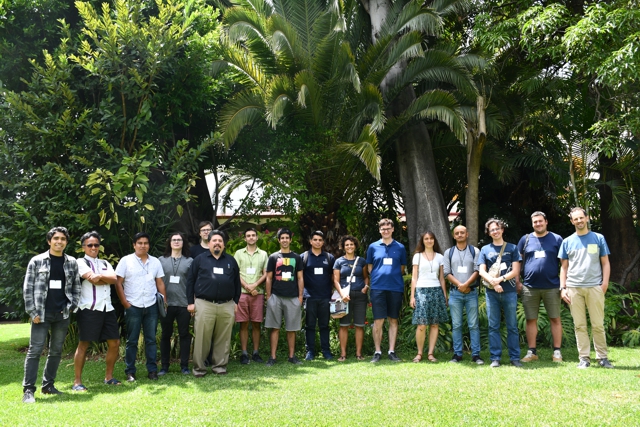Group Actions on Cantor Sets (23w5044)
Organizers
Noé Barcenas (UNAM)
Steffen Kionke (University of Hagen)
Matteo Vannacci (University of the Basque Country)
Description
The Casa Matemática Oaxaca (CMO) will host the "Group Actions on Cantor Sets" workshop in Oaxaca, from September 3 to September 8, 2023.
Geometry is the study of form and shape. These notions lie at the basis of many instances of geometrical knowledge, and embody different examples of connection between mathematical objects, which might be lines, points, or complex organization systems of geometric nature, which in some cases have singular behaviour.
One of the most famous geometric structures in Mathematics is known as the Cantor set, due to the seminal contribution of Georg Cantor at the end of the 19th Century. It consists of a completely disconnected system of points of the line with a highly singular structure (e.g. no line of positive length is contained in the Cantor set), as well as an apparent scarceness of symmetry at first sight.
On the other hand, the notions of symmetry and regularity naturally lead us to the notions of group and group action. In fact, a group can be thought of as the set of rigid moves that preserve a certain symmetry of an object, for example an hexagon or an icosahedron. Geometric Group Theory is a highly active research direction which explores the role of symmetries in geometry.
In the recent development of Mathematics, the study of symmetry of highly singular objects has contributed to the simultaneous understanding of symmetries and groups. The aims of the Workshop are the study of symmetries of the Cantor set, and the understanding of the groups arising as symmetries of the Cantor set.
The Casa Matemática Oaxaca (CMO) in Mexico, and the Banff International Research Station for Mathematical Innovation and Discovery (BIRS) in Banff, are collaborative Canada-US-Mexico ventures that provide an environment for creative interaction as well as the exchange of ideas, knowledge, and methods within the Mathematical Sciences, with related disciplines and with industry. The research station in Banff is supported by Canada’s Natural Science and Engineering Research Council (NSERC), the U.S. National Science Foundation (NSF), Alberta’s Advanced Education and Technology, and Mexico’s Consejo Nacional de Ciencia y Tecnología (CONACYT). The research station in Oaxaca is funded by CONACYT






